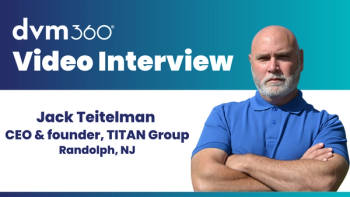
Commentary: Nonprofit veterinary clinics do far more good than harm
Patient health should be the priorityregardless of practices profit status.
An estimated 23 million pets live in poverty in America.1 Millions more are in homes that struggle daily to make ends meet. These pets are much beloved and their owners want the best care possible for them, but for many pet owners, even basic veterinary services are out of reach. Nonprofit veterinary clinics have helped to make these services accessible, but recent attempts to close or restrict their activities raise serious ethical issues for the profession.
As the recent economic downturn progressed, many Americans found themselves with less disposable income and were forced to make tough decisions about all noncritical expenditures, including preventive veterinary care. Unfortunately, the cost of veterinary medical education, advanced medical technologies and new pharmaceuticals increased as well, making veterinary practices more expensive to operate. In response, many practices were forced to raise their fees to match increasing expenses and, as a result, found themselves losing clients.
Dr. Michael Blackwell asserts that a more stringent standard of care makes veterinary services unaffordable to many.
At the same time, a more subtle challenge has contributed to client erosion, namely a shift in what constitutes an appropriate standard of care. Initially defined as a minimum acceptable level of caretaking, standard of care has recently come to reflect an uppermost level of medicine and surgery, one that is often accessible only to more affluent pet owners.
For a patient with a broken leg, the inexpensive but still humane and effective technique of splinting has long been considered appropriate care. However, there appears to have been a shift in thinking recently, with surgical plating becoming the only acceptable treatment. Although more state-of-the-art treatment is ideal, many pet owners just can't afford it. As “low-tech,” less expensive options no longer qualify as acceptable care, more and more clients have been forced to forgo veterinary care altogether.
Have a response to this commentary? Comment below or email
For some, the answer to this dilemma is that if you can't afford a pet, you shouldn't have one. However, that's an overly simplistic and even potentially dangerous argument. Pets add value to people's lives and should not be considered a luxury available only to a privileged few. For many people, their pets are one of their most valued relationships in terms of the joy and love they provide. Nearly two-thirds of Americans already have pets and that number continues to grow.
Efforts to limit where nonprofit groups can operate, the scope of services they may provide, and the types of clients they can assist are not the answer. After all, the pet owner who can't afford vaccinations for her dog could be your neighbor who was just laid off from her job, or the friend whose husband was just diagnosed with cancer, or someone who is struggling to pay college tuition for a child.
In the spring of 2015, a diverse group of veterinarians representing private practices, nonprofit clinics and animal welfare organizations came together to discuss these concerns and how the veterinary profession can return to its original foundation of ensuring humane care and treatment of all animals. The group agreed on the following basic principles:
1. All animals deserve veterinary care.
2. Many pets in the United States are not getting the veterinary care they need.
3. Veterinarians should have the freedom to provide a spectrum of care for their patients, meaning:
- Veterinarians should have the flexibility to offer proven, effective treatments for their patients, with the understanding that those options may not involve the use of the most expensive, technologically advanced or state-of-the-art equipment or techniques.
- Veterinarians should be able to consider pets' individual circumstances and their owners' living situations when determining proper courses of treatment.
- Veterinarians should have the legal protection and professional approval to provide appropriate care to underserved animals, whether that is in for-profit or nonprofit practice settings.
- Nonprofit veterinary practices should not be required to limit the scope of services they provide or perform means testing or other income screening of clients simply because of their nonprofit status.
These fundamental principles, known as the Guiding Principles to Ensure Access to Veterinary Care, resonate with many veterinarians. Please join those veterinarians across the country in signing on to show your support as the first step to ensure that the voices of those who have none of their own, those very lives we have sworn to preserve, are never lost by visiting
From these guiding principles will be the birth of a coalition whose goals will be to:
- Foster development and promotion of methods for providing access to veterinary care for the millions of pets currently without it.
- Respond to legislative, regulatory and other efforts designed to interfere with nonprofit practices' ability to serve pet owners, and work to preempt and avoid such action whenever possible.
- Improve collaboration among private for-profit and nonprofit veterinary service providers as well as relevant social services providers to promote access to veterinary care for all pet owners.
- Provide guidance to the veterinary profession regarding ways it can help promote access to veterinary care for all pet owners.
The veterinary profession is stronger and its impact is greater when we all work together toward fulfilling common goals to protect those whom we have taken an oath to serve.
Michael Blackwell, DVM, MPH, is a member of the board of the Humane Society Veterinary Medical Association.
Reference
1. This number is an estimate from the Humane Society of the United States, based on the number of families below the poverty line (11.5 percent of the U.S. population) and the average number of families with pets (approximately 66 percent).
Newsletter
From exam room tips to practice management insights, get trusted veterinary news delivered straight to your inbox—subscribe to dvm360.





